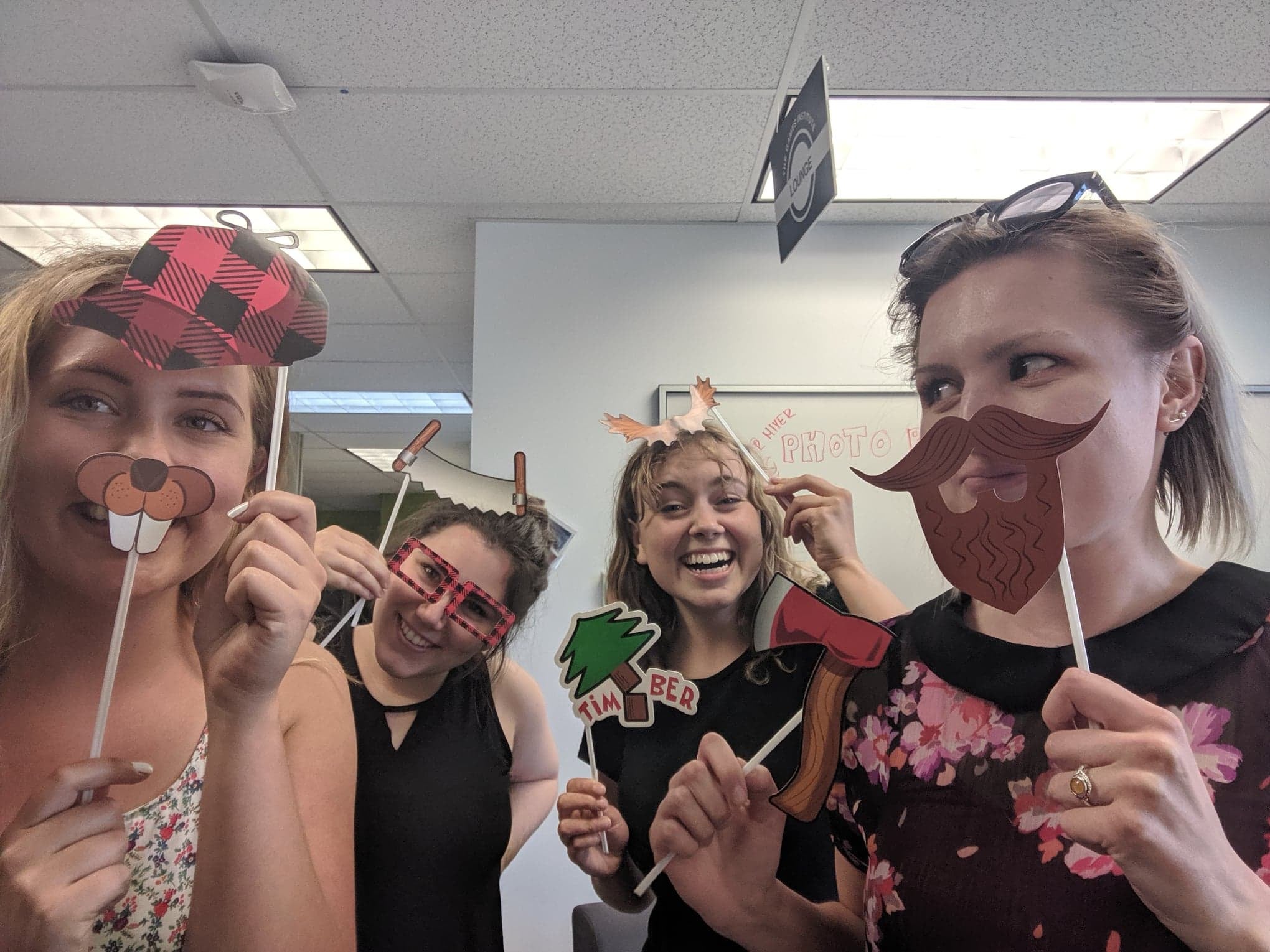Over the next few weeks, we’ll be sharing excerpts from Pamela Maria Schmidt's award-winning Co-op Report. Currently Research Projects Facilitator at the Games Institute, Pam received the English Co-op Report Award in recognition of her significant contribution to our community during her co-op terms as Operations Assistant (S'19) and Assistant Project Manager (F'19).
Stay
tuned;
Not
only
does
the
report
showcase
the
brilliance
of
one
of
our
researchers
and
staff
members,
it
offers
spectacular
insight
into
the
Games
Institute
culture. Pam
discusses
how
and
why
we
use
games
to
facilitate
interdisciplinary
crossovers,
and
this
springboards
into
a
fantastic
discussion
on
how
we
articulate
interdisciplinarity
in
the
fibres
of
what
we
do.
I started my co-op term at the Games Institute (GI) at the same time as two other new hires, Grace Wright and Krystyna Oakman. In our first week, our supervisor, Agata, suggested we play games and chat. Inevitably, we were awkward and slow to start getting to know each other. Plus, we were all working on different projects so it was easy to keep to ourselves.
At the end of that awkward first week, Marisa Benjamin, Research Communications Officer at the GI, invited all of us, including Agata, to play a round of One Night Ultimate Werewolf in the Collaboration Space for the rest of afternoon, Friday. Marisa figured playing a social deception game would serve as an effective icebreaker as we would have to lie and deceive one another – what better way to force friendships?

Team Village is trying to catch the werewolves, while the werewolves are trying to frame someone on Team Village so they can escape undetected.
Gameplay requires players to do a bit of detective work to figure out who everyone is playing as in order to track down the werewolf (or werewolves). You can lie, fabricate identities, and manipulate in this game. As long as it leads to victory, there are no limits to achieving your goal.
We quickly learned more about each other: Marisa always lies, Krystyna laughs at everything, Grace doesn’t reveal information until it is “mission-critical,” Agata always tells the truth, and I get really angry when I tell the truth and no one believes me.
Slowly, gameplay shifted to just regular bonding and talking about our interests. When I mentioned that the game reminded me of the bystander effect, the group started a full discussion about the treatment of women in historical eras like the Salem Witch Trials. Being able to talk about a whole variety of things – including light and heavy topics – allowed us to break a lot of ground in becoming more comfortable with each other. We sat down as strangers, and stood up with solid knowledge of our cultures, values, and educational backgrounds.
We turned back to playing One Night Ultimate Werewolf throughout the term, either to celebrate a milestone, to have reprieve after a bad day, or, simply, to have fun. The strong communication we were building in the game extended to our work, too. Learning our various playstyles and approaches to the game illuminated our strengths when faced with challenges in the workplace, allowing us to learn to recognize and value each others’ perspectives.